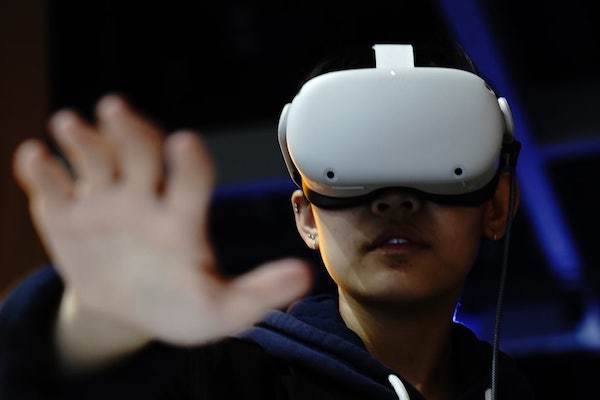“Immersive” experience the feelings of the victim
The lifelike man approached a female colleague at the office. He opened his phone and showed her the pictures. After a moment, he placed his hand on her thigh. Annoyed, the woman pushed her colleague’s hand away from her body.
With glasses virtual reality (VR), users will witness such images in courses on preventing bad behavior in the workplace.

Some people claim that new technology is the key to raising awareness about the problem harassment or abuse the office. Still, there are concerns about the effectiveness of this approach and its negative impact on former victims.
Vantage Point and Sisu VR are offering virtual reality training on workplace harassment and abuse. According to these companies, the experience of employees experiencing the feeling of being the victim of bad behavior is more awareness-raising than listening to a PowerPoint presentation or a stack of stale content documents. They believe that VR scenarios have the ability to arouse more empathy and understanding for participants, which in turn can prevent harassment and abuse in the workplace.
“People can experience what it feels like to be a victim,” said Morgan Mercer, CEO of Vantage Point. “We put the user in a situation that was a bit uncomfortable. Create an experience that makes them feel like they need to do something and then we can really teach them what it is.”
Mercer, founder of Vantage Point, shared that she feels admiration for the advancements in VR technology, especially when watching a horror movie and having to scream because it feels so real. “If we can create emotionally engaging situations and experiences for other applications, why not do this for training and education?” “And that was my ‘aha’ moment.”
Jocelyn Tan, CEO of Sisu VR, said that she started the company after being slapped by a male colleague in the middle of a meeting. Since then, she has researched through friends, family, and leaders at companies to see what they have done to prevent the same thing from happening to others.
“They say there are training courses in the workplace that instruct people to behave appropriately. But the problem is that the process is bland and unremarkable,” says Tan. “And I decided to revolutionize the field.”
A typical VR training session requires the user to use wearable devices. They then enter the virtual world with lifelike characters and can observe or participate in specific situations. At some point, the program will stop and interactively ask questions, or offer solutions to help get out of a difficult situation.
Concerns
However, some experts are being cautious. They warn that, if VR offers a more engaging learning experience, the technology could also negatively impact victims of gender or racial discrimination in the workplace. If VR scenarios merely replicate what the old training model did, their impact could be limited. Not only that, this form of innovation can make companies feel like they’ve done enough.
“Companies may think this technology is the answer to all problems, but I don’t think it’s capable of it,” said Elden King, a professor at Rice University and an expert in training on harassment. so”.
Erick Ramirez, a professor and VR expert at Santa Clara University, says that traditional training in sexual harassment is not very effective, focusing only on concepts and temporary solutions. rather than an overarching containment strategy. In addition, the classification of “victim” and “harassment” made people not want to interact during the training session.
“In my opinion, VR is also just transforming what is being done by companies. So the effect will probably be equivalent to the traditional way,” Ramirez said, but also acknowledged that technology can have a stronger impact on participants’ emotions.
Meanwhile, Y-Vonne Hutchinson, CEO of consulting firm ReadySet, worries that victims of sexual harassment or racism in the workplace will be negatively impacted by training courses that mimic the experience. such experience.
She said offering training that exposes participants to an uncomfortable experience is ignoring the need for protection of sensitive people. “Victims are, in many ways, suffering in the lessons of education for others,” Hutchinson said.
The ReadySet director says that even as people learn, there’s nothing to suggest that a workplace culture will respond quickly to bad behavior. If an employee does not empathize with a victim of discrimination or abuse, the benefits of training, no matter how novel it is delivered, will not be as effective.
“If you can’t empathize with people who are hurt, then I think it’s a personal issue and can’t be solved with a VR training,” Hutchinson concludes.
at Blogtuan.info – Source: Soha.vn – Read the original article here



